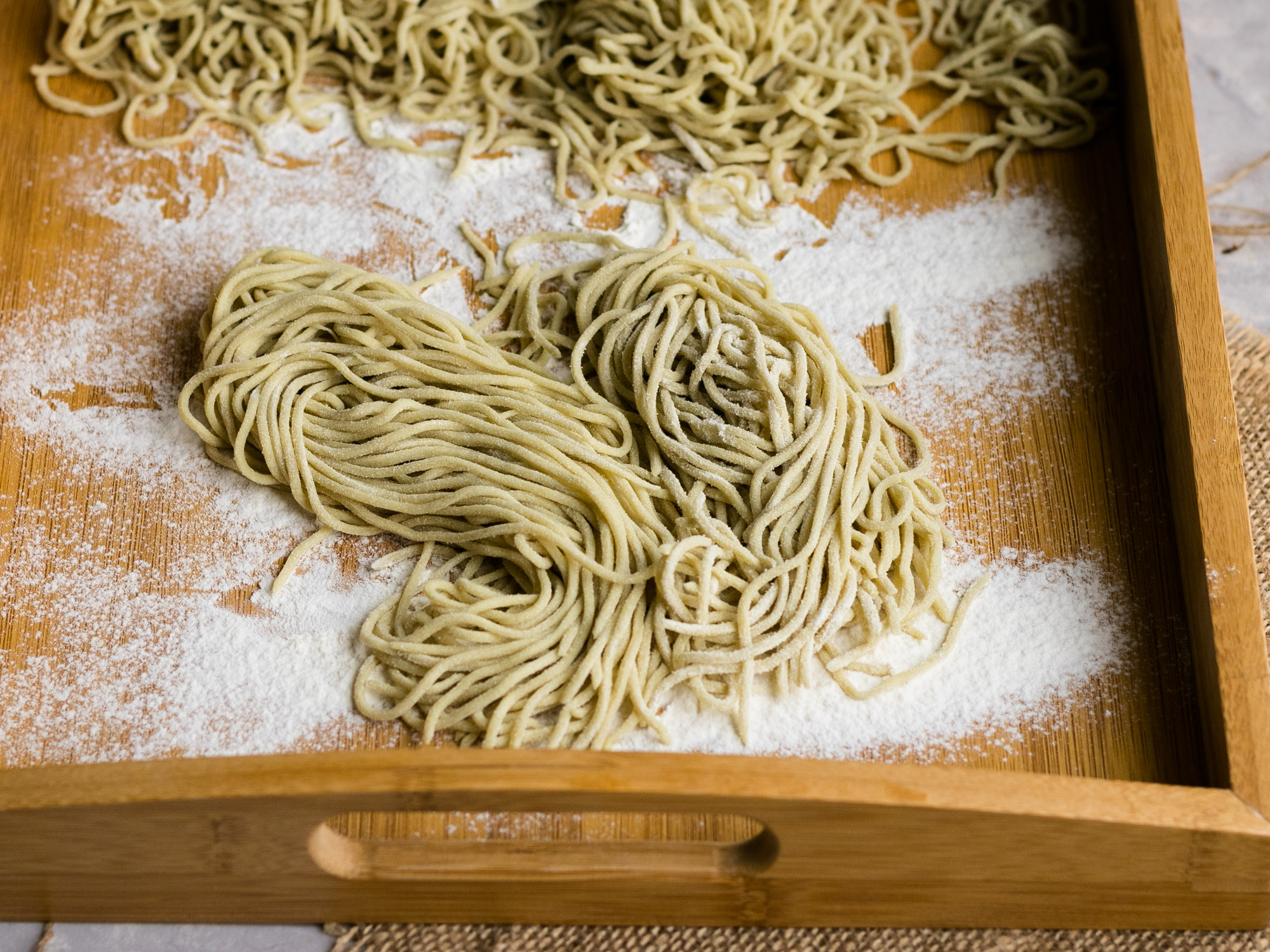Ramen noodles

At some point in the beginning when you mix all the ingredients together, you’re going to wonder if I’ve screwed up on the water amount and you’ll be tempted to add a lot more water. Don’t panic! Expect it to be a scraggly, hard mess in the beginning. If you add extra water, only use enough so that there isn’t any dry flour. When it sits there resting, the flour will absorb the water and it becomes a more pliable as time passes. The baked bicarb is what makes the noodles that yellow colour and it’s a bit more friendly on the skin than using lye water but you still want to use a wooden spoon to mix everything together before kneading with your hands.
INGREDIENTS
3g baked bicarbonate soda (refer to notes)
330g plain flour + extra for dusting
150g water
4g salt
Notes: To prepare the bicarb – you need to spread a thin layer bicarb soda onto a baking tray lined with foil and bake in a 120 degree oven for 1 hour. You’ll have more than what you need for the recipe so just set aside the extra to use next time you want to make noodles.
METHOD
Dissolve the bicarb in the water then add the flour and salt and mix together in a bowl and initially you’ll find it seems really dry but turn it out onto bench and try to knead the shaggy mess for a few minutes but don’t expect it to be smooth.
Cover it with cling film and let it sit for an hour.
After an hour, knead the dough for a few minutes – it’ll be a little easier to manipulate. At this point, I flatten the dough into a long rectangle. I fold one third in, then the other third and flatten everything down. I have a heavy wooden rolling pin and I often end up whacking the dough gently to flatten the dough. I repeat the fold and flatten technique one or two more times before letting the dough sit for another hour.
When ready to roll out the dough, divide the dough into 4-5 pieces. Cover the pieces you’re not working with. Set up the pasta maker and lightly dust with flour. Set the pasta maker to the widest setting and roll the dough through. At this stage the dough may feel like it’s tearing easily and soft. Just fold the dough up and roll it through again – you can repeat this a couple of times till the dough feels more elastic. You’re slowly changing the setting of the pasta to a narrower setting and rolling through the folded dough. Once you’re down to the second thinnest setting it’s ready to be cut. Dust the sheet of dough generously with flour.
Set up the spaghetti attachment on your pasta maker and lightly dust it with flour before rolling the dough through the attachment. Dust the noodles generously with flour and set aside. Repeat with the rest of the dough.
The noodles are easy to cook, bring a pot of water to boil and season with salt. Throw in a batch of noodles and they’ll cook within a few minutes.
